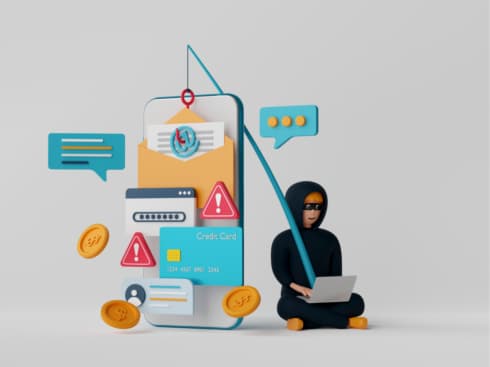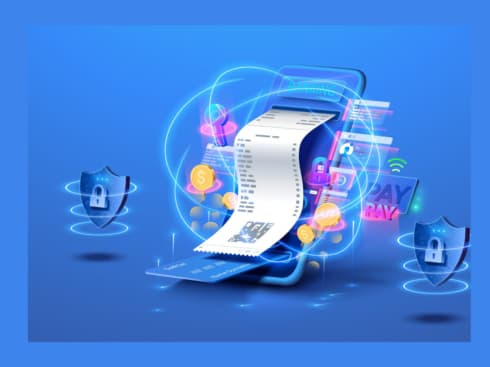
A chargeback, in the truest sense of the word, is a potential reversal of funds to a cardholder when they dispute a certain transaction
From classifying the dispute reason code to informing the merchant, the entire chargeback process is handled manually. This can open up Pandora's box of problems
All of these processes could be automated with AI, allowing the acquirer to achieve an end-to-end seamless connection, optimising efforts and lowering operational costs
The word ‘chargeback’ holds an air of mystery in India. It is not a routine word that we often come across in our daily banking operations. On the other hand, we are quite familiar with the term ‘dispute’. It is not common knowledge that a chargeback is actually part of the dispute process.
What Is A Chargeback?
Every time a cardholder contacts their bank to dispute a transaction, it means they are initiating a chargeback. A chargeback, in the truest sense of the word, is a potential reversal of funds to a cardholder when they dispute a certain transaction. The reasons to dispute that transaction could range from authorisation and processing errors to fraud. Out of these three categories, the sub-categories of criminal fraud, consumer dispute and friendly fraud are the most popular ones. In fact, friendly fraud has been climbing up by 41% every two years
Criminal fraud occurs when a cardholder’s information is stolen in order to initiate transactions, as opposed to friendly fraud, which occurs when a cardholder refuses to pay for a legitimate transaction. Almost 23% of cardholders have accepted that they have committed friendly fraud during the survey conducted by Sift’s Q4 2022 Digital Trust & Safety Index
And in the case of a consumer dispute, the conversation must have taken place between the merchant and cardholder, but the cardholder chooses to converse with the bank instead of the merchant, or they might not have received a favourable response from the merchant.
These three categories of chargeback have one thing in common, they are completely handled manually at every step of the way. From classifying the dispute reason code to informing the merchant, the entire process is carried out via emails, phone calls, and file sharing. This opens Pandora’s box of problems, such as:
- There is no way to classify if the dispute comes under friendly fraud or customer dispute
- The process and time taken to resolve a dispute are too long
- The cardholder is on a constant run between the biller, bank and payment app in case of UPI
- Too many instances of friendly fraud are on the rise
- The chances of miscommunication between the parties involved are higher
- The incoming flow of disputes especially those that arise during a sale becomes too much to handle for the operation team
- The process and knowledge of the chargeback process are unclear to the parties involved, and so on
And given the rise of online transactions since demonetisation and the pandemic, all these problems have increased and caught the attention of the Reserve Bank of India (RBI). To address this, they evaluated the situation and released the Online Dispute Resolution (ODR) circular on August 6, 2020.
This mandate called for a rule-driven system designed to address customer complaints and concerns related to digital payments by employing an automated and rule-based approach, minimising the need for manual intervention. In short, an AI-assisted chargeback/dispute automation system.
To understand this mandate better, let’s break down the current system’s challenges and see how an AI-assisted chargeback system can make the process seamless.
Here is a story illustrating the same:
Mr A contacts his bank to dispute a recent online transaction in which he received the product but it did not meet the seller’s standards or quality. In this case, Mr A has two options:
- Contact the seller and ask for a refund or a replacement
- Talk to his bank and dispute the transaction
If the first option works out, the case of dispute never arises, but if Mr A receives a negative response from the seller or completely bypasses the seller and contacts the bank, therein begins the chargeback cycle.
Scene 1: When Registering The Dispute With The Bank
When raising a dispute complaint with the bank, Mr A will be agitated as he has been defrauded by the seller with a sub-standard product, so he will convey the same to the bank.
If the dispute is raised via customer care or IVR, the pain of the call getting disconnected or repeating the same problem keeps happening, and Mr A becomes all the more frustrated.
Scene 2: The Dispute Record Creation
Because Mr A will use the word “fraud” several times, the customer care executive will flag the transaction as fraudulent and notify the analyst. Here, the executive will overlook or miss the difference between fraud and consumer dispute.
The Solution
If an AI-assisted chargeback automation system is in place, Mr A will not need to talk to a system or human to raise a dispute. All they need to do is select the transaction in the mobile banking app or Internet banking window and answer a few simple questions regarding the nature of their dispute. Once answered the AI-based model will rightly classify the dispute as criminal fraud, friendly fraud or consumer dispute based on their responses.
It will save Mr A hours of time waiting in line to talk to the customer care executive or getting the dispute rejected due to the wrong classification.
Scene 3: The Problems Faced By Bank (Cardholder’s Bank Or Issuer)
Since demonetisation and the pandemic, the rise of digital transactions has been meteoric, contributing to the rise of disputes. Even more so, when a sale or festival sale is approaching, banks face a large influx of chargebacks, resulting in angry customers and unresolved disputes.
Furthermore, the costs of maintaining and educating the operation team on the nuances of chargeback operations are enormous.
The Solution
When an AI-assisted chargeback team is at the heart of an issuer’s operations, handling a high volume of chargeback becomes simple. The operations team will be able to concentrate their efforts on improving customer experiences and retention.
Scene 4: The Stumbles Of The Acquirer (Merchant’s Banker)
Let’s take a look at the other side of the dispute resolution process. When a dispute is filed, the acquirer is the one who comes to the merchant’s aid.
In the typical scenario, the acquirer and merchant are locked in a cycle of document collection that results in missed Turn Around Times (TATs) and increased costs. The decision of whether a chargeback should benefit the merchant or the customer is based on critical factors such as compelling evidence, the refund scenario, and the validity of the dispute.
Currently, acquirers and merchants are trapped in a never-ending cycle of manual collection, compilation, verification, and validation of the above-mentioned detailed documents.
Not to mention the manual collection of disputes from the network, which mirrors the laborious process that merchants go through. Furthermore, locating the appropriate document becomes a challenge, as analysts must navigate between multiple tabs to align the data.
The Solution
All of these processes could be automated with AI, with API triggers leading the communication channels, document collection, and validation, allowing the acquirer to achieve an end-to-end seamless connection. Setting up AI models to resolve dispute cases within TAT will contribute to optimising efforts and lowering operational costs.
Additional Advantages Of AI-Assisted Chargeback Automation When Implementing ODR
- Right classification of disputes
- Issuing refunds, if possible, during the pre-dispute stage
- Timely notification to all parties involved
- Lowering the instances of friendly fraud and so on
Disputes are dynamic in nature, and they can pave the way for changes in the parties’ regulations, compliance, and policies. However, with AI-assisted ODR implementation solutions, we can expect a significant shift in how they can be handled, as well as an increase in operational efficiency and customer retention.































 Ad-lite browsing experience
Ad-lite browsing experience




